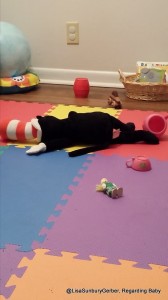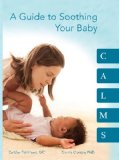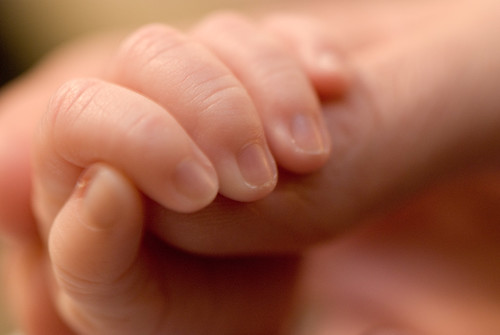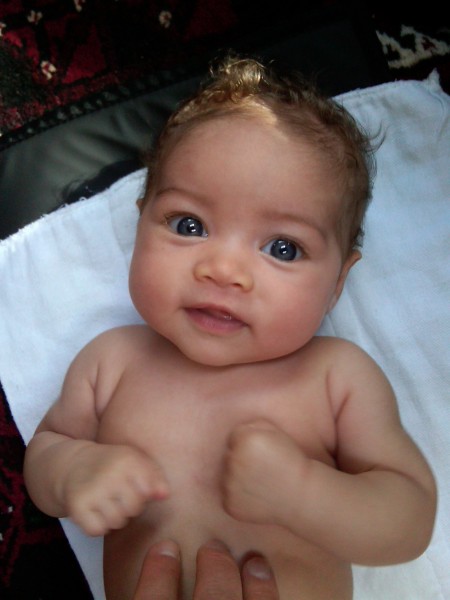(With thanks to Janet Lansbury for the title!)
I actually took this picture of R’s play space about three weeks ago, but it seemed appropriate to post here, today. R had been playing, and then went for a nap, and I went to tidy up her play space and happened upon this scene, which just made me break down in laughter. I shared this photo on facebook, and it seemed to bring joy to many, and also resulted in this most amazing conversation/revelation which I also want to share, as a testimony to the power of social media to connect and strengthen all of us.
In response to this photo, Ody, who lives in New York and is someone I have yet to meet in person, but who is a facebook friend and follower responded:
“I must tell you that my father who doesn’t speak, read or write much English is one of your followers. (I told him about you and how we are implementing a RIE approach at our home.)”
I replied: “Your comment just made me cry (happy tears). Thank you. That is just so beautiful that your father wants to learn and talk about RIE with you, and I am beyond honored that he’d take the time and effort required to translate my posts. So often, I hear from people that their families don’t understand or are critical. And to think that the Internet has made this all possible. It just blows me away.”
Ody: “He took the liberty of adding you and with the help of a dictionary reads everything and then comes and talks about it with the rest of the family and I! He is a wonderful father and always being very respectful and loving towards us, his kids!
Now I am going to translate! Lol! Menegildo Cruz, Le explique a mi amiga Lisa, que usted ha sido un padre maravilloso, muy respetuoso y que siempre ha estado informado y muy al día con todo los acontecimientos.Lo mucho que me apoya con Lulu y el hecho de esta en FB aún con su poca limitación en el Inglés y tecnología. Lo amo!”
Ody: “Awww, you have no idea how much impact your posts have in our life. We talk about it during dinner time! Is part of my bonding with him. He has always being a man ahead of his time, but most of all a great listener. Always paying attention to what’s important to us.This is a man that used to wake up hours before my mom to make us breakfast, that used to cut newspaper articles and send then to me while I was away in college so when on his phone calls to me on Saturdays we could talk about it. Thank you, for creating this platform and educating us. Besos”
Someone very close to me, who has been a friend, a teacher, and a mentor, and who knew Magda Gerber well, recently expressed her doubts about on-line relationships and learning. She asked me, “Do you really think it’s possible for people to connect in a real way on-line? Do you really think we can share RIE in a way that is authentic, and will help people to understand, learn, and make use of the philosophy without the face to face “in person” connection?” My answer is yes! This conversation is an example of that for me. It warmed my heart and confirmed for me what is possible when we engage in, and use social media authentically, responsibly and with intention. There are drawbacks and limitations to be sure, but today, I wanted to share with you a possibility.
Happy New Year, everyone!




